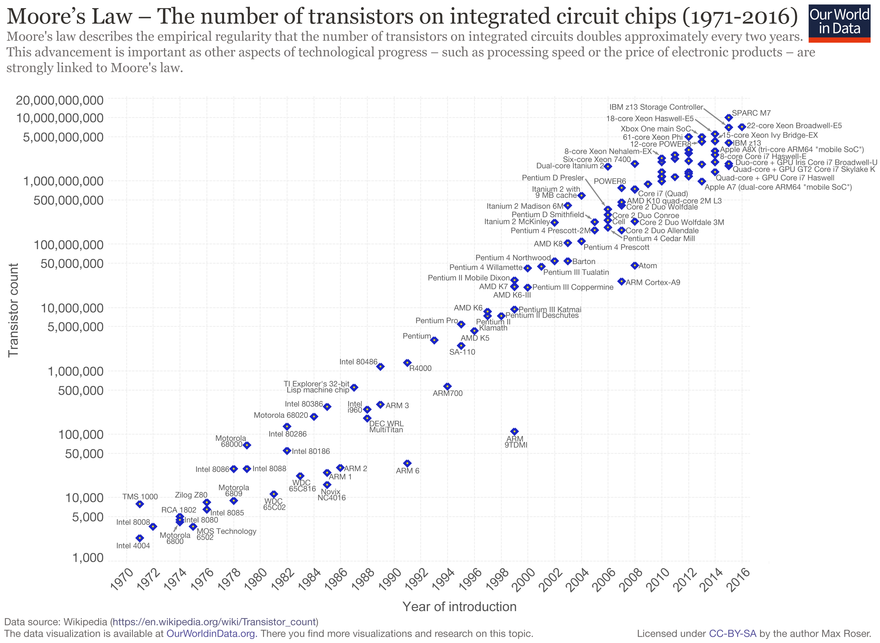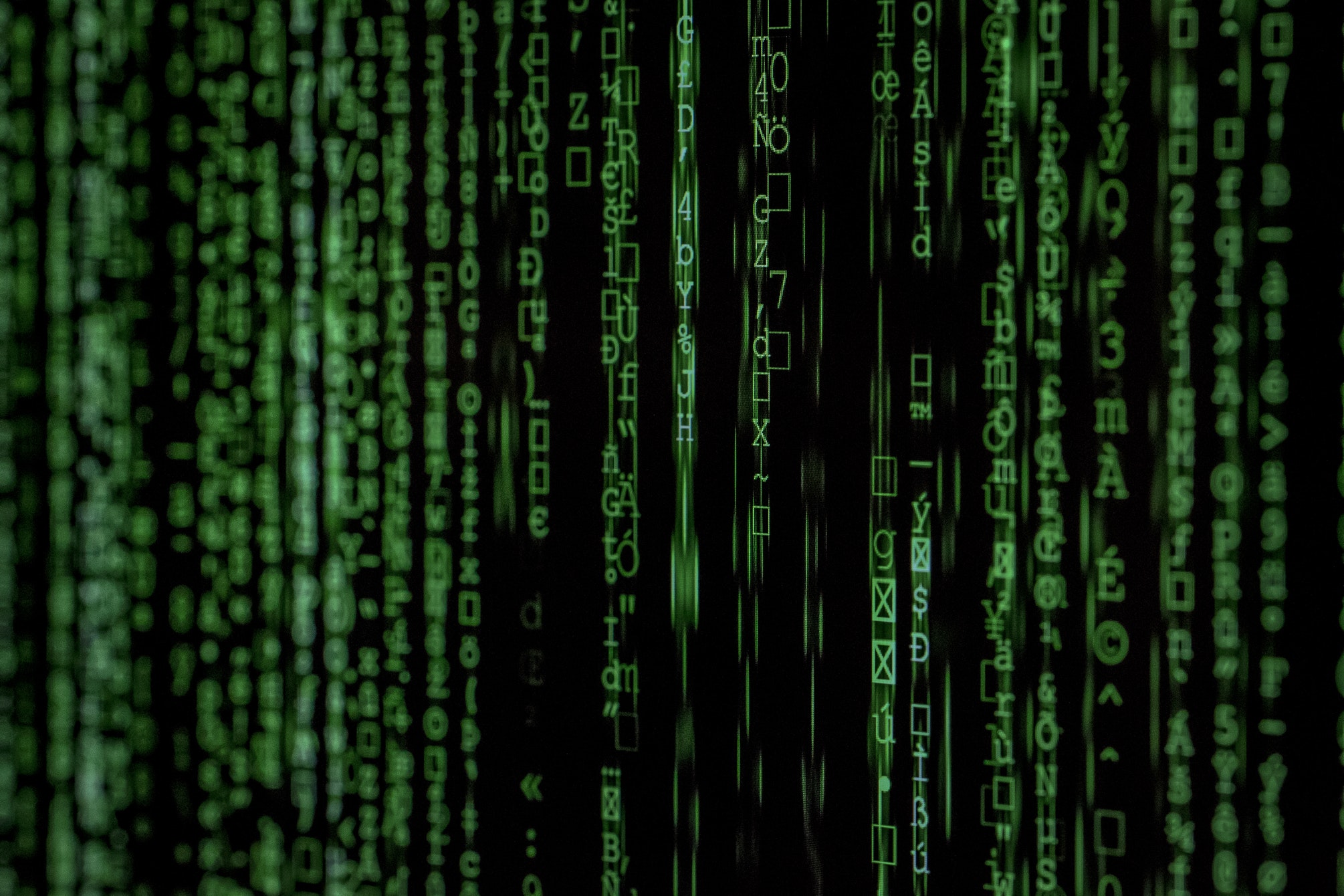Digitalization: Hardly any other buzzword has been used so much in recent years. And as so often with buzzwords, their utilization is inversely proportional to their understanding. Everything is somehow connected with digitalization, but it is not clear what this digitalization is all about. Of course, it has something to do with computers and computing power. However, it cannot be that alone, as computers have been around for too long. A decisive aspect of digitalization is networking. Smartphones made digital devices suitable for everyday use and networking the standard. And this increasingly dense network of ever more powerful and ubiquitous computers is the bedrock for platforms that will then eventually disrupt tried-and-tested rather analog business models.
Moore’s Law: Exponential Growth of Computing Power
Ever smaller, ever more powerful computers are the basis for digitalization. As early as 1965, Gordon Moore put forward the thesis that the computing power doubles every year and Moore’s law is still valid today. Even if the observations show that computing power does not double every year but rather every 18 months, this is clearly exponential growth. This relationship can be seen in the following diagram (source: Wikipedia), in which the number of transistors on integrated circuits is shown on a logarithmic scale, i.e. an exponential relationship is shown as a straight line.

Most people understand that rationally. But when it comes to imagining the future, we usually extrapolate linearly. We look back at what has changed over the last five years, for instance, and assume that it will develop at a similar speed. But it doesn’t.
This misconception can be quickly detected in a thought experiment. The film “Back to the Future” is about a journey through time between 1985 and 1955 and part of the film’ s funny story is based on the fact that the world developed and changed technologically between 1955 and 1985. If one were to make the same leap in time of 30 years between 1985 and 2015, one would quickly recognize that the change in digitalization is not linear, but much greater. In those 30 years, the first computers like the C64 have evolved into a permanently networked smartphone that is a camera, navigation device, walkman, portable TV and much more. There is a clear overlap between the world of 1955 and that of 1985, and as a time traveler you can still find your way around. From 1985 to 2015 the technological leap is much greater and one would probably be completely lost as a time traveler.
The Platform Makes The Difference
Computing power alone is not enough for digitalization. It allows you to create all kinds of information in digital form, convert it into digital form and edit it in digital form, but everything remains local and with local effects. The music industry has itself pushed ahead with digitalization and digitized music in the form of CDs. And MP3 per se was no problem for the music industry either. It only became a problem with the ever better networking of computers and the resulting file sharing platforms such as Napster. This made the locally available digital information accessible to everyone and everywhere. The music industry was trapped in its old business model, which was selling records, and had to be rescued from this trap by visionaries like Steve Jobs with the iTunes Store and then streaming services like Spotify.
If you digitalize a crappy process, you have a crappy digital process.
Thorsten Dirks, former CEO of Telefónica Germany AG
Networking the devices is the basis, but platforms make the difference. Both Nokia and RIM with the Blackberry had great products at the time Apple introduced the iPhone. Looking purely at the hardware with its isolated operating system, the iPhone was perhaps a little better designed and a little more usable, but the sweeping success cannot be explained by this narrow perspective. One major difference was that the iPhone focused rigorously on mobile Internet.
The former mobile phones, which also featured some e‑mail and poor mobile Internet capabilities, became full-featured smartphones with a permanent Internet connection. But that probably wouldn’t have been enough either, because there were not enough use cases for mobile Internet besides e‑mail and surfing the web. The decisive difference was Apple’s App Store (and at the same time Google’s equivalent for Android). Apple (and Google) made the smartphone a more or less open platform for third-party applications. Apart from Apple also making significant profits with the App Store, every new application on this platform led to an increase in the value of the iPhone.
Since then, on the basis of ubiquitous networking via smartphones, more and more new digital platforms have emerged on which suppliers and customers find each other. Digitalization is thus also reaching into areas and markets that do not appear to be digital at first. Uber attacks the business model of taxi companies without a single taxi of his own. And thanks to digitalization worldwide. Airbnb competes with established hotel groups without owning a single hotel. Of course also worldwide. This is the real digitalization.





